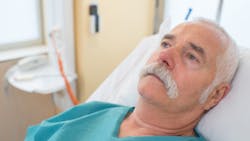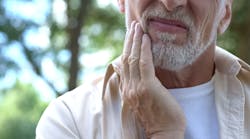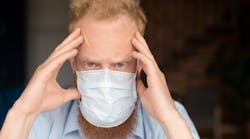New fears in an already feared profession: Tips to consider when reopening your dental practice in the COVID-19 era
Currently, if there is one profession that invokes fear and dread in most people, it’s dentistry. Patients are always anxious and apprehensive about being poked and prodded with drills and sharp instruments during routine dental procedures. Add to that the risk of contracting a potentially deadly virus, and it’s easy to understand why many would be unwilling to visit a dental clinic for a regular check-up at this time.
Over the past two months, dental practices nationwide have been forced to close due to the rapid spread of COVID-19. Dentists, oral surgeons, orthodontists, and others in the field were forced to take an unscheduled hiatus, only dealing with emergency cases.
The new normal
Now that stay-at-home orders are slowly being lifted, dental practices are gradually reopening. How can dentists resume practicing when both patients and staff are afraid to come into the office?
Health experts agree that testing and contact tracing are the most effective ways to determine whether someone has contracted coronavirus. However, while testing levels in the country have increased, only a small portion of the population have been tested. Test availability is a very real concern, along with questions about test accuracy. Remember, someone who has tested negative today can receive a positive result if retested days later.
The majority of tests are being performed on people who already exhibit symptoms, those working in high-risk environments, and first responders. For dental practices to reopen, should testing be mandatory? Are there enough tests available to do so? How costly would this be? How quickly can we get results?
Without having solid answers to these questions, and accepting that testing everyone is probably not feasible at this time, what can dentists do to ensure the safety of their staff and their patients?
Social distancing has been the number one approach used to help slow the spread of this virus, but is it possible to practice social distancing in a field that requires close contact to treat patients? How do we reopen dental practices when the health risks are unprecedented?
Reasons to reopen
It’s important to acknowledge that dentists are doctors too, and their patients need them! Dental offices cannot remain closed forever. Not only from an economic standpoint, but from a general health perspective, dentists have compelling reasons to reopen.
Without patient traffic, there is no way practices can sustain their payroll and overhead expenses. While many have tried to provide limited emergency care during the lockdown period, many dentists need to resume providing preventative care and treatment for their businesses to survive.
Dental professionals have always been exposed to infections, and older generations have lived through other health scares in the past, such as HIV and SARS. Indeed, there is so much we still don’t know about COVID-19, but we can’t live with this fear for eternity; we have to find a way to live with this pandemic.
That is why dental offices are being urged to adhere to CDC1 and OSHA guidelines2 when it comes to providing safety in the workplace. We need to assure our staff and our patients that we’re committed to maintaining the highest standard of infection control, sanitization, and accessibility to PPEs. Strict compliance with industry rules and regulations has always been a priority in dentistry. But during this pandemic, we need to institute additional preventative protocol to protect ourselves and those we serve.
As unpleasant as it seems, we need to proceed with utmost caution and treat everyone as a potential risk without causing more anxiety or hysteria. This will require many necessary changes in order to resume business.
Recommendations for businesses amidst the ongoing crisis:
Set expectations in advance
Every patient needs to be made aware of changes to expect during their next appointment. Iterate, and then reiterate, the new modifications during phone screenings. For instance, anyone entering the office must wear a mask. Adults must come alone unless they require physical assistance from another adult. Only one adult should accompany a child, and bringing siblings along is discouraged.
Temperature should be taken upon arrival. Anyone with a cough or fever should be carefully assessed. Send follow-up emails detailing new office protocol before appointments, and hang signage where everyone can see it upon arrival. Clear signage is critical!
Eliminate waiting rooms
To promote social distancing among the staff and patients, remove chairs from your waiting room. Advise all who are coming in for an appointment to call from their car when they arrive. The receptionist can notify patients by call or text when the dentist is ready to see them.
It’s also helpful to remove all magazines, toys, and any furniture that might entice patients to linger. Create a one-way traffic pattern to more easily maintain social distancing. Put tape on the floor to prevent people from getting too close to front desk personnel. Inform everyone ahead of time that they may need to wait in their car or outside before being admitted.
Use digital documents
We’re all familiar with the stack of paperwork surrounding insurance, fees, and contracts. Convert these forms to digital documents when possible, then email necessary documents ahead of time and collect insurance information during pre-screening calls. Ask patients to complete all intake and medical history forms prior to their visit. These fillable forms can also be attached to your website.
Practice teledentistry
Do your best to triage patients over the phone.3 Office administrators can fill out an intake form and ask a slew of questions before scheduling an in-office appointment. A hygienist can triage the patient via a phone or video call to assess the situation further. They can then review the findings with the doctor to see if it's necessary for the patient to visit the office in person.
Also keep in mind that doctors can prescribe treatment over the phone to prevent an unnecessary visit. If you need more employees on demand to cater for unexpected patient traffic or to cover for absenteeism, take advantage of an online staffing platform. Throughout the COVID-19 crisis, most of these platforms have been active, and dental offices have been using them to hire temps quickly, with zero permanent placement fees.
Listen and be empathetic
Everyone is concerned for their own safety and the safety of their loved ones at this time. Business may be slower than usual. Patients may be less likely to show up for their appointments. Staff may be apprehensive about reporting to work as well.
Take the time to listen to both staff and patients and address their specific concerns. In general, stay positive and look for available alternatives. We are all in this together, and the only way we’ll get through it is by collectively adhering to the new rules, while being innovative with ways to slow the spread of the virus.
Final thoughts
Dentistry evoked fear into the hearts of many long before the novel coronavirus came onto the scene. But, when all is said and done, to successfully reopen and rebuild trust among patients and staff, the emphasis needs to be on providing a safe environment and quality care.
While the search for a vaccine and more effective treatments remains the primary focus for medical experts, dental practices need to do their part to slow the spread of the virus by making the necessary adjustments to daily routines. At present, closely adhering to all safety regulations put in place by the relevant authorities would go a long way toward assuaging the fear and anxiety associated with going to the dentist.
References
- Guidance for dental settings. Centers for Disease Control and Prevention. Updated May 19, 2020. https://www.cdc.gov/coronavirus/2019-ncov/hcp/dental-settings.html
- COVID-19 guidance for dental practitioners. Occupational Safety and Health Administration. https://www.osha.gov/Publications/OSHA4019.pdf
- ADA policy on teledentistry. American Dental Association. https://www.ada.org/en/about-the-ada/ada-positions-policies-and-statements/statement-on-teledentistry
Elizabeth Crockton is a freelance writer who lives in the Greater Boston Area and has over 25 years of managerial experience in retail, merchandising, and now dentistry/orthodontics. She currently serves as treatment coordinator trainer and Invisalign program manager with a Boston-based DSO. She creates training programs and presentations for all positions within the company and focuses on developing leaders and improving daily operations to better serve patients. From front office personnel to the doctors themselves, Elizabeth promotes sales and people skills to increase production and profitability.
About the Author
Elizabeth Crockton
Elizabeth Crockton is a digital adoption specialist with Align Technology and a freelance writer from Watertown, Massachusetts. She provides training to doctors and their teams to enhance chairside communication through technology and verbiage, primarily through the iTero scanner. She has previously served as a treatment coordinator trainer within a Boston-based DSO, where she developed a variety of training programs. Elizabeth promotes the importance of combining clinical expertise with exemplary people skills to increase production and profitability within dental practices.
Updated September 28, 2022


